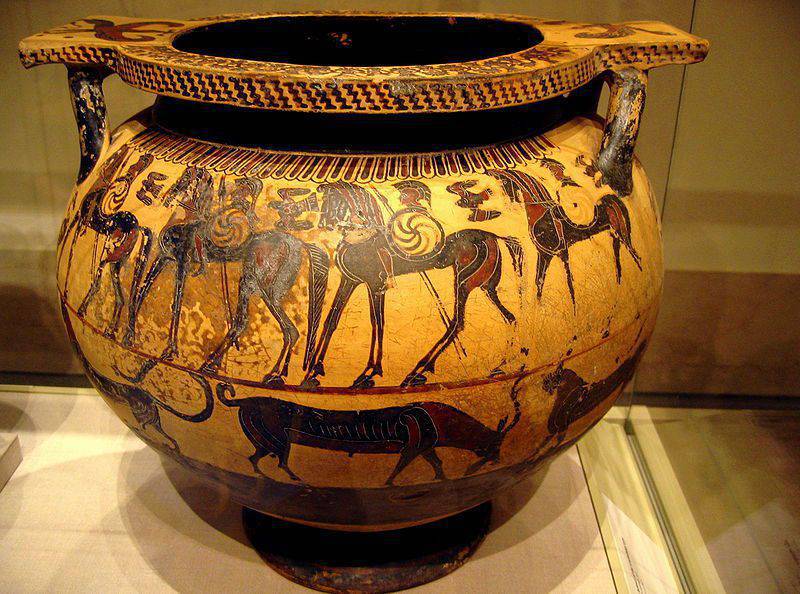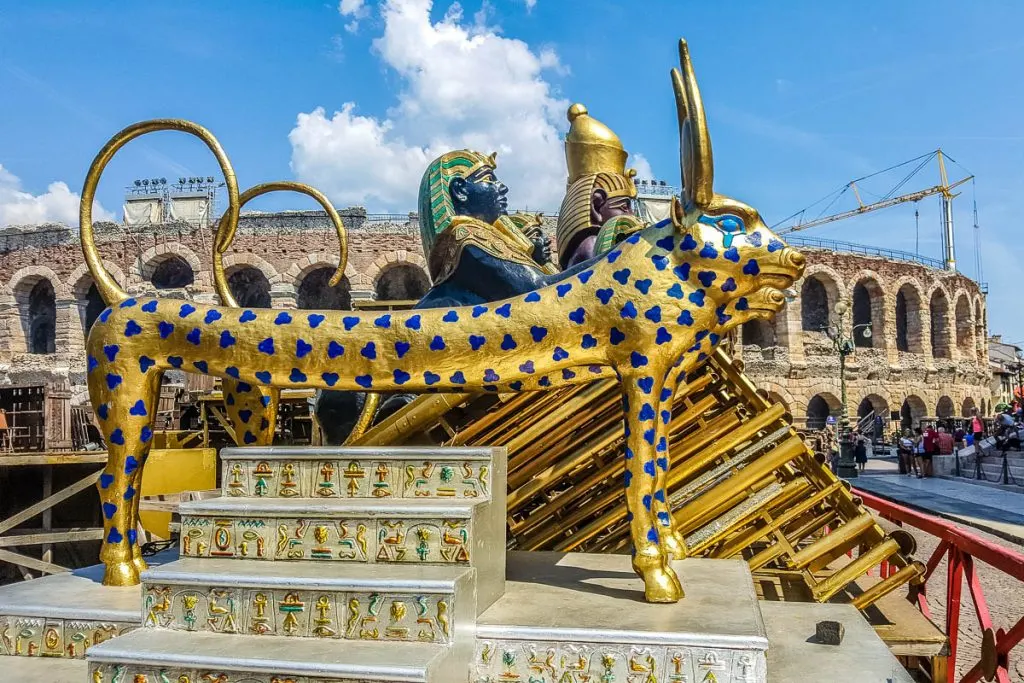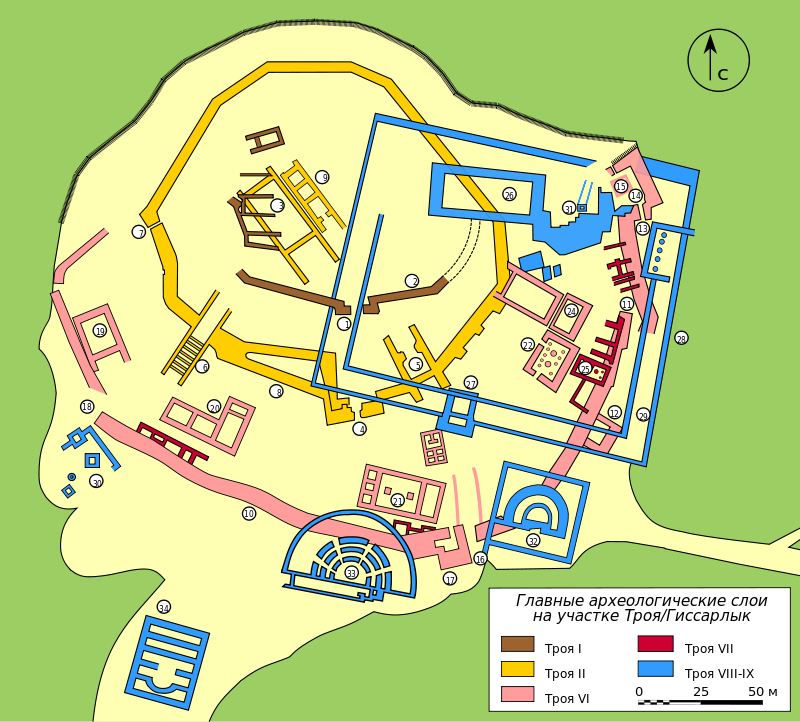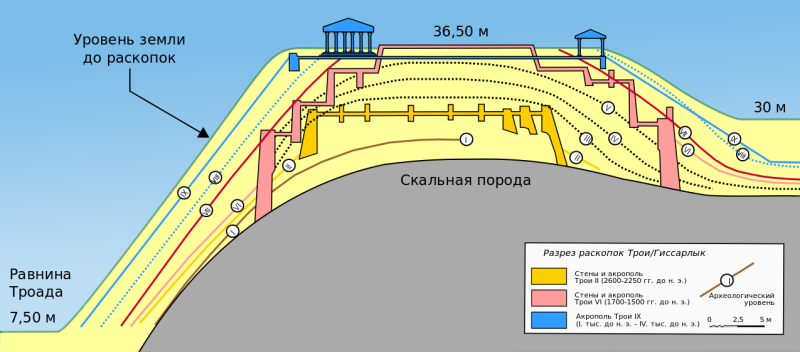During the discussions about the content on the HE website, it became apparent that a significant number of users were intrigued by Bronze Age weaponry, particularly the arms and armor of the legendary Trojan War.
The subject at hand is quite fascinating, with many well-known stories that even fifth graders might recognize from their school textbooks. Tales such as “Copper spears,” “Helm-helm Hector,” and “the famous shield of Achilles” all stem from this source.

Furthermore, this significant event is truly one-of-a-kind. Interestingly enough, it was first introduced to people through a poem, a piece of art. However, as they delved deeper into understanding it and developed a genuine interest, they ended up gaining insights into a previously unknown culture.

A pottery piece from Corinth featuring black figures that portray figures from the Trojan War, dating back to around 590-570 BC, is on display at the Metropolitan Museum in New York.
You need to go back to the beginning of the story. The myth of Troy, which was besieged by the Greeks, wasn’t proven with convincing evidence until the late nineteenth century. But then, thanks to the romantic childhood dream of Heinrich Schliemann and some powerful financial support (Schliemann got rich!), everything changed for the better. He set off to Asia Minor in search of the legendary Troy.

After the year 355 AD, there was no mention of this place anywhere. Then Schliemann believed that the detailed description given by Herodotus matched the Ghisarlyk hill and so he started digging there. This continued from 1871 for more than 20 years until his passing. The archaeologist, in this case, was on a mission! He extracted artifacts from the excavation site without documenting them, discarded anything he deemed unimportant, and just kept digging…until he found what he believed to be the ancient city of Troy.

Many scientists during that era questioned whether the site was truly Troy, but with the support of British Prime Minister William Gladstone and the expertise of professional archaeologist Wilhelm Dörpfeld, the mysteries of the ancient city slowly began to unravel.

The most surprising finding was the discovery of multiple cultural layers, revealing that each time a new city of Troy was built, it was constructed on top of the remains of the previous one. The oldest layer, Troy I, dates back the farthest, while the youngest layer, Troy IX, was from the Roman era. Currently, there are a total of 46 layers (and sublayers) at the site, making it quite challenging to study Troy in its entirety.

According to Schliemann, he initially thought the Troy he was looking for was Troy II, but it turned out to be Troy VII. Archaeological evidence has shown that the city met its end in a devastating fire, with the remains found in this layer indicating a violent death for its inhabitants. This event is believed to have taken place around 1250 BC.

.